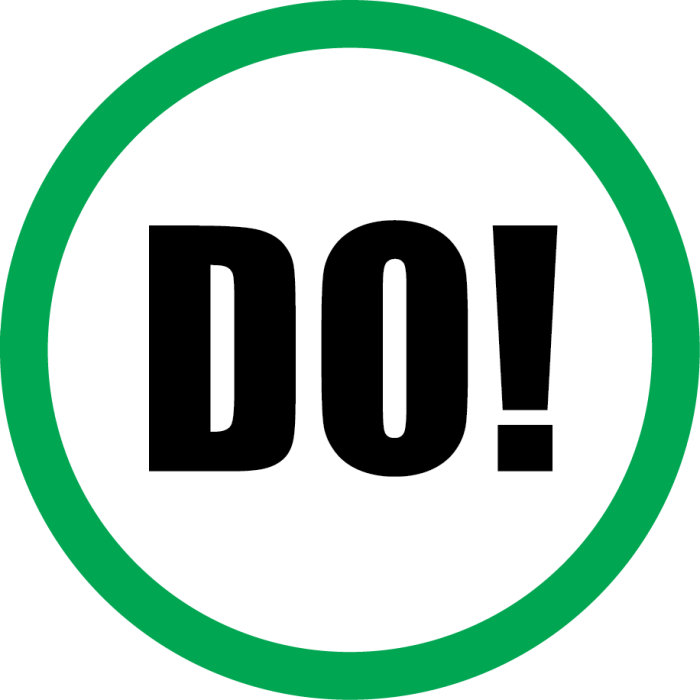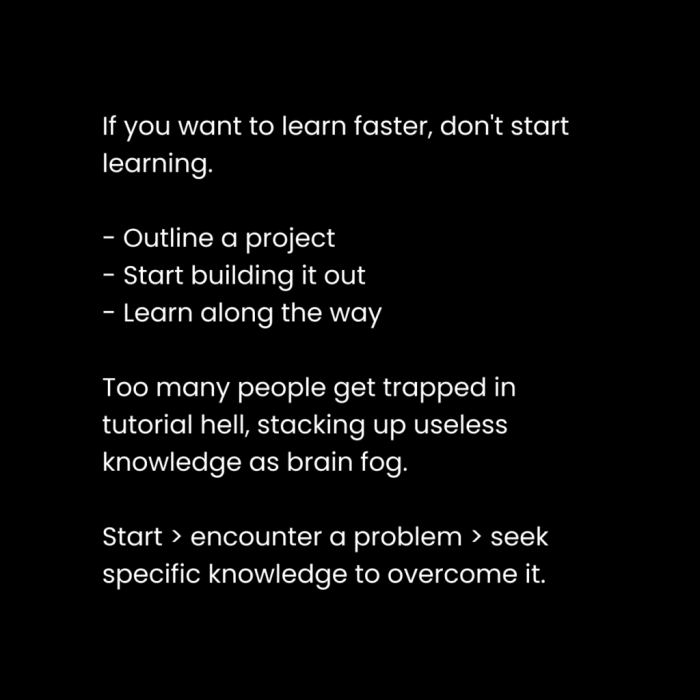Seven lessons after leaving toxic relationships: This journey through healing and self-discovery offers valuable insights into navigating the complexities of toxic relationships and emerging stronger. From recognizing the warning signs of a toxic dynamic to building resilience, this guide provides a comprehensive framework for understanding the emotional rollercoaster and the path towards a healthier future.
This exploration delves into the specific characteristics of toxic relationships, the stages of healing, and practical steps for establishing healthy boundaries. We’ll examine the importance of self-discovery, emotional intelligence, rebuilding trust, and ultimately, moving forward with resilience. The guide is structured with detailed explanations, tables for clear comparison, and actionable strategies for personal growth.
Recognizing the Signs of Toxicity

Toxic relationships, while often insidious, leave lasting emotional and psychological scars. Understanding the subtle and overt signs of toxicity is crucial for recognizing when a relationship is detrimental and taking steps to protect your well-being. Learning to identify these patterns allows you to make informed decisions about your relationships and prioritize your emotional health.
Characteristics of a Toxic Relationship
Toxic relationships are characterized by a pattern of behaviors that erode self-esteem, create fear, and undermine personal growth. These relationships often involve a power imbalance, where one partner consistently exerts control or manipulates the other. This dynamic can manifest in various forms, from subtle emotional manipulation to overt abuse. Crucially, a toxic relationship consistently prioritizes the needs and desires of one partner over the other, leading to a feeling of being undervalued and unheard.
Common Patterns of Toxic Behavior
Recognizing the patterns of behavior in a toxic relationship is essential for protecting yourself. These patterns often manifest in subtle ways, making them difficult to initially identify. However, consistent repetition of these behaviors serves as a red flag. Common patterns include:
- Controlling Behavior: This involves attempts to restrict your freedom, dictate your choices, or isolate you from friends and family. Controlling behavior can range from subtle attempts to manipulate your decisions to overt attempts to control your daily life. For example, a partner might constantly check your phone, dictate where you go, or forbid you from spending time with loved ones.
This behavior aims to limit your independence and autonomy, making you more reliant on the controlling partner.
- Emotional Abuse: This includes behaviors such as criticism, insults, name-calling, threats, and constant belittling. Emotional abuse undermines your self-worth and creates a climate of fear and insecurity. For instance, a partner might constantly criticize your appearance, your choices, or your abilities, making you feel inadequate and questioning your own judgment.
- Gaslighting: Gaslighting is a manipulative tactic where the toxic partner makes you question your own sanity or memory. They might deny past events, twist your words, or accuse you of being overly sensitive or imagining things. This creates confusion and doubt, making you question your perception of reality.
- Withholding Affection or Support: This includes deliberately ignoring your needs, withdrawing affection, or failing to provide emotional support during challenging times. This pattern of behavior can lead to feelings of abandonment and isolation. A partner might become emotionally distant, stop showing affection, or avoid supporting you during difficult periods. This creates a sense of emotional disconnect and instability.
- Financial Manipulation: This involves controlling your finances, withholding money, or pressuring you to make financial decisions that you don’t feel comfortable with. This form of manipulation undermines your financial independence and can create significant stress. A partner might restrict your access to money, demand detailed financial reports, or pressure you to make investments or spend money in ways you disagree with.
Emotional and Psychological Impact of Toxic Relationships
Toxic relationships can have a devastating impact on an individual’s emotional and psychological well-being. The constant stress, fear, and insecurity can lead to anxiety, depression, low self-esteem, and trust issues. The psychological impact can extend to difficulty forming healthy relationships in the future.
Table of Toxic Behaviors
| Toxic Behavior | Impact on Partner | Examples |
|---|---|---|
| Controlling Behavior | Feelings of helplessness, loss of autonomy, and isolation. | Dictating what you wear, who you spend time with, or where you go. |
| Emotional Abuse | Low self-esteem, anxiety, depression, and feelings of inadequacy. | Constant criticism, insults, name-calling, or threats. |
| Gaslighting | Confusion, doubt, and a distorted perception of reality. | Denying past events, twisting your words, or accusing you of being overly sensitive. |
| Withholding Affection or Support | Feelings of abandonment, isolation, and lack of emotional connection. | Ignoring your needs, withdrawing affection, or avoiding emotional support. |
| Financial Manipulation | Financial stress, loss of financial independence, and a sense of vulnerability. | Controlling your finances, pressuring you to make financial decisions, or withholding money. |
The Journey of Healing
Leaving a toxic relationship is a significant step toward personal growth, but it’s also a deeply emotional journey. The healing process is rarely linear and often involves a rollercoaster of feelings. Understanding the stages and typical emotions can empower you to navigate this challenging period with greater self-awareness and compassion. It’s crucial to remember that healing takes time, and every individual’s experience is unique.
Stages of Healing
The healing process after leaving a toxic relationship often unfolds in distinct stages. These stages aren’t always sequential and may overlap, but recognizing them can provide a framework for understanding your emotional experience. Understanding these stages allows for a more realistic perspective on the timeline of healing and a more compassionate approach to navigating the process.
Emotional Rollercoaster
Leaving a toxic relationship can trigger a wide range of emotions. Feelings of sadness, anger, anxiety, and even relief are common. You might experience waves of intense emotions, followed by periods of calm. This emotional rollercoaster is a natural part of the healing process. It’s important to acknowledge and validate these feelings without judgment.
Self-Care and Self-Compassion
Self-care and self-compassion are essential during this healing journey. Taking care of your physical, emotional, and mental well-being is crucial for moving forward. Practicing self-compassion means treating yourself with the same kindness and understanding you would offer a friend experiencing similar challenges. By prioritizing your needs and offering yourself empathy, you pave the way for healthier emotional responses.
Healing Stages and Strategies
| Stage of Healing | Typical Feelings | Self-Care Strategies |
|---|---|---|
| Initial Shock and Denial | Confusion, numbness, disbelief, denial of the toxicity, anger, fear, anxiety, and overwhelming sadness. | Allow yourself to feel whatever you feel without judgment. Connect with trusted friends or family members. Engage in activities that bring you comfort, like listening to music, taking a bath, or going for a walk. |
| Grief and Loss | Sadness, longing for the past relationship, feelings of emptiness, regret, and isolation. | Acknowledge and accept the loss of the relationship as it was. Allow yourself time to grieve the loss of the idealized version of the relationship, or any dreams and hopes connected to it. Engage in healthy coping mechanisms like journaling, talking to a therapist, or practicing mindfulness. |
| Self-Discovery and Acceptance | Increased self-awareness, recognition of your own strengths, and newfound independence. Possible feelings of vulnerability, self-doubt, or shame may surface. | Engage in activities that help you connect with your inner self, such as journaling, meditation, or creative expression. Set personal boundaries and prioritize your needs. Celebrate your accomplishments, no matter how small. |
| Rebuilding and Growth | Increased confidence, clarity, and a sense of empowerment. Feeling more capable and resilient. You might experience a sense of relief and peace. | Focus on building a support network of positive and healthy relationships. Set realistic goals for your future. Engage in activities that bring you joy and fulfillment. Continue to practice self-care and self-compassion. |
Lessons Learned from the Experience
Leaving a toxic relationship was a deeply painful but ultimately transformative journey. It forced me to confront not just the hurt and anger, but also the patterns in my past relationships that had led me to these destructive situations. The process of healing wasn’t linear, and there were many moments of self-doubt and fear. However, emerging from the experience, I gained invaluable insights into myself and what I truly need in a partner.
These lessons are not just about avoiding past mistakes, but about building a healthier and more fulfilling future.
Key Takeaways from the Journey
This section Artikels the seven core lessons I learned, detailing how they impacted my perspective and approach to relationships. Each lesson highlights a specific area where I needed to grow and evolve, and how recognizing these patterns has profoundly changed my outlook.
Leaving a toxic relationship is tough, but it opens up a whole new world of possibilities. Seven key lessons emerged for me, like prioritizing self-care and setting healthy boundaries. One crucial aspect of feeling good about myself post-breakup is fueling my body with the right nutrients. This is why I’ve been researching the best foods for fat burning, like the ones listed in this awesome article about 30 most effective fat burning foods and drinks.
It’s all part of a holistic approach to healing and building a stronger, healthier me. Ultimately, learning to love myself, one healthy meal at a time, is the most powerful lesson I’ve learned from this experience.
Lessons Learned
My journey of healing revealed seven critical lessons that have irrevocably altered my perspective on relationships. These insights are not simply theoretical; they are grounded in the experiences and challenges I faced.
Leaving toxic relationships teaches valuable lessons about self-respect and boundaries. One crucial takeaway is learning how to effectively communicate with a partner who might be hypersensitive, which is key to a healthy relationship. Understanding the nuances of communication, like active listening and clear, calm expression, is vital for navigating these situations. Learning these skills can be immensely helpful in avoiding the pitfalls of past toxic dynamics.
To delve deeper into this, check out this insightful guide on how to effectively communicate with a hypersensitive spouse. Ultimately, these seven lessons are all about building a stronger, healthier relationship, one where mutual respect and understanding thrive.
- The Importance of Setting Boundaries: I initially struggled to assert my needs and limits in relationships. This often led to feeling taken advantage of and depleted. Understanding and communicating my boundaries is crucial for protecting my emotional well-being. For example, I learned to say “no” to requests that made me uncomfortable and to clearly define what I was willing and not willing to tolerate.
This proactive approach has significantly reduced the risk of being overwhelmed in future relationships.
- Recognizing Red Flags Early: In the past, I dismissed or minimized warning signs in relationships, leading to prolonged exposure to harmful behaviors. Now, I actively identify and address red flags promptly. This includes paying attention to controlling behaviors, emotional manipulation, and a lack of respect. Recognizing these warning signs early allows for a quicker exit from potentially damaging situations, preventing further emotional harm.
- Prioritizing Self-Care: My previous relationships often consumed my time and energy, leaving me feeling depleted and drained. I learned the importance of prioritizing my own well-being. This involves engaging in activities that nurture my mental, emotional, and physical health. For example, I make time for hobbies, exercise, and spending time with supportive friends and family, fostering a sense of self-worth that is independent of the relationship.
- Embracing Emotional Intelligence: I learned the significance of understanding and managing my own emotions, as well as recognizing and responding to the emotions of others. This includes acknowledging my own emotional triggers and developing healthy coping mechanisms. For example, I now practice mindfulness and meditation to regulate my emotions and approach difficult conversations with greater empathy.
- Valuing Self-Respect: In past relationships, I compromised my values and self-respect to maintain the relationship. I realized that I deserve to be treated with respect and dignity. This includes setting boundaries and communicating my needs assertively. For example, I now prioritize partners who demonstrate respect and value my independence.
- Seeking Support Systems: I used to isolate myself during challenging times. Now, I recognize the importance of having a strong support system of friends, family, or therapists. They provide a safe space for me to express my feelings, receive guidance, and maintain perspective. This is crucial in times of stress or conflict, allowing me to navigate challenges with a healthier mindset.
Leaving toxic relationships is tough, but freeing. You’ll find yourself grappling with unexpected cravings and withdrawal symptoms, just like when you break your sugar habit. It’s a powerful parallel; this happens when you break your sugar habit highlights the emotional rollercoaster of letting go of something harmful. But those seven lessons learned—trusting yourself, setting boundaries, and recognizing your worth—are ultimately the most crucial steps in rebuilding a healthier life.
- Focusing on Personal Growth: The experience highlighted areas within myself that needed growth. I actively sought opportunities for self-reflection, personal development, and addressing past traumas. This involved therapy, journaling, and engaging in activities that fostered self-discovery. For example, I participated in workshops on communication skills and conflict resolution to further enhance my emotional intelligence.
Building Healthy Boundaries: Seven Lessons After Leaving Toxic Relationships
Leaving a toxic relationship is a significant step towards self-empowerment, but true healing often hinges on the ability to establish and maintain healthy boundaries. This crucial step allows you to protect your emotional and physical well-being, fostering a sense of safety and respect within your life. It’s about recognizing your needs and ensuring those needs are met without sacrificing your own worth.Healthy boundaries are essential for navigating relationships, both personal and professional.
They are not about being selfish, but about prioritizing your well-being and setting clear expectations for how others interact with you. This approach builds stronger, more fulfilling relationships based on mutual respect and understanding.
Significance of Healthy Boundaries
Healthy boundaries are the foundation of a fulfilling life. They allow you to separate your needs and emotions from those of others, preventing emotional drain and burnout. Without boundaries, you risk becoming overly involved in other people’s issues, leading to resentment and a diminished sense of self. Healthy boundaries promote self-respect, which is crucial for attracting and maintaining healthy relationships.
Practical Examples of Setting and Maintaining Boundaries
Setting and maintaining boundaries requires conscious effort and consistent practice. Here are some practical examples:
- Saying “no” to requests that don’t align with your values or capacity. For instance, declining an invitation if it means sacrificing time for self-care. This doesn’t imply negativity; rather, it’s about prioritizing your needs and well-being.
- Communicating your needs and expectations clearly and respectfully. Expressing “I need some space” or “I’m not comfortable with that” in a calm and assertive manner fosters mutual understanding.
- Establishing limits on how much you’ll tolerate from others. This includes setting clear expectations for how others should treat you and holding them accountable when they cross those lines. For example, deciding not to engage in arguments or conversations that are disrespectful. This demonstrates your personal values and boundaries.
- Protecting your personal time and space. Creating dedicated time for yourself, hobbies, or relaxation is essential for self-care and preventing burnout. This also includes having a safe space where you feel protected and respected, whether at home or in a public setting.
Healthy Boundaries vs. Unhealthy Boundaries
Healthy boundaries are assertive and respectful, fostering mutual understanding and respect. They allow for growth and personal responsibility. Unhealthy boundaries, on the other hand, can be passive, aggressive, or manipulative, leading to conflict and resentment. Healthy boundaries protect your well-being; unhealthy boundaries can leave you feeling depleted and controlled.
Identifying and Communicating Your Boundaries
Identifying and communicating your boundaries is a crucial step in building healthy relationships. Start by recognizing your values, needs, and emotions. Identify situations where you felt taken advantage of or pressured. Next, articulate your boundaries clearly and concisely. Practice expressing them assertively and respectfully.
This involves clear communication, not passive-aggressive behavior or anger.
| Boundary | Example of Healthy Communication | Example of Unhealthy Communication |
|---|---|---|
| Time Commitment | “I’m happy to help, but I can only commit to two hours this week.” | “Fine, but I’m going to be really busy.” (Passive-aggressive) |
| Emotional Support | “I’m not comfortable listening to your problems every night. Maybe we can meet once a week?” | “You’re always complaining, it’s too much.” (Blaming) |
| Personal Space | “I need some time alone to recharge. Can we meet later?” | “I’m not interested in talking to you right now.” (Withdrawn) |
Rediscovering Yourself
Leaving a toxic relationship is a monumental step towards self-discovery. It’s a time for introspection, a chance to shed the masks we wear in relationships and rediscover the authentic person we are. This process isn’t just about identifying what we want, but also about acknowledging and accepting what we need to move forward. This self-discovery journey is crucial for building a stronger, healthier future.Reconnecting with your values and passions is essential for this process.
Toxic relationships often stifle our individual desires, making us question our own beliefs and goals. Taking the time to re-evaluate what truly matters to you, and what makes you feel alive, is a powerful way to reclaim your inner compass.
Identifying Your Values
Understanding your core values is the foundation of self-discovery. This involves reflecting on your beliefs, principles, and the things that guide your decisions. Are you driven by creativity, independence, or connection? Identifying your values allows you to create a life aligned with your authentic self. For example, if community is a core value, you might look for opportunities to volunteer or connect with like-minded people.
Reconnecting with Passions, Seven lessons after leaving toxic relationships
Passions are the flames that ignite our motivation and drive. Toxic relationships can often extinguish these flames. Taking time to rekindle those passions is an important part of the healing process. This might involve rediscovering a hobby you loved, exploring a new interest, or engaging in activities that once brought you joy.
Activities for Self-Growth and Empowerment
Engaging in activities that foster self-growth and empowerment is crucial for building resilience and confidence. These activities can include:
- Journaling: Reflecting on your thoughts and feelings in a journal can help you process emotions and gain clarity on your journey.
- Mindfulness and Meditation: Practicing mindfulness and meditation can help you connect with your inner self and cultivate self-awareness. This helps you become more present in the moment and manage stress.
- Creative Expression: Engaging in activities like painting, writing, or playing music can provide a healthy outlet for emotions and boost self-expression. It’s a way to tap into your creativity and express yourself authentically.
- Setting Healthy Boundaries: This is a crucial step in protecting your well-being and ensuring your needs are met. Learning how to set healthy boundaries protects your emotional and mental health. It’s about understanding your limits and communicating them effectively.
- Physical Activity: Exercise is a powerful tool for stress relief, improving mood, and boosting self-esteem. Find an activity you enjoy, such as running, dancing, or swimming. Even a simple walk in nature can be restorative.
- Learning New Skills: Expanding your skill set can boost confidence and open new doors for personal and professional growth. Learning a new language, a musical instrument, or coding are examples.
Activities to Promote Self-Discovery and Healing
These activities can help you reconnect with your authentic self, uncover your passions, and build a stronger, more empowered you:
- Attending workshops or seminars: These can provide valuable insights and support in your journey of self-discovery.
- Taking a solo trip: Spending time alone in a new environment can facilitate introspection and a deeper understanding of yourself.
- Spending time in nature: Connecting with nature can be incredibly restorative and help you reconnect with your inner peace.
- Engaging in volunteer work: Giving back to the community can boost self-esteem and foster a sense of purpose.
- Connecting with a therapist or counselor: A therapist can provide guidance and support during this crucial period of self-discovery.
- Reading self-help books or articles: Exploring different perspectives and strategies can provide valuable insights and support your journey.
Developing Emotional Intelligence
Leaving a toxic relationship is a significant step toward personal growth, but true healing involves understanding and managing your emotions effectively. This understanding is crucial for building healthy relationships in the future. Developing emotional intelligence is a vital part of this process, allowing you to navigate your feelings and those of others with greater clarity and empathy.Emotional intelligence is the ability to understand and manage your own emotions, and recognize and influence the emotions of others.
It’s about recognizing your emotional responses, understanding their impact on your thoughts and actions, and responding constructively rather than reactively. This skill is paramount in forming and maintaining healthy relationships. A strong foundation in emotional intelligence enables you to communicate effectively, resolve conflicts constructively, and build stronger, more meaningful connections with others.
Defining Emotional Intelligence
Emotional intelligence encompasses several key components. Self-awareness is the ability to recognize and understand your own emotions, including their triggers and effects. Self-regulation involves managing those emotions effectively, preventing them from overwhelming you or causing impulsive actions. Social awareness involves understanding the emotions of others and recognizing their perspectives. Relationship management is about using this understanding to build and maintain positive relationships.
Improving Emotional Awareness
Developing emotional awareness involves recognizing and labeling your feelings. Keep a journal to track your emotions throughout the day, noting what triggers them and how you respond. Pay attention to physical sensations associated with different emotions. For instance, anger might manifest as a tightening in your chest, while sadness might present as a heavy feeling in your stomach.
Practicing mindfulness, where you focus on the present moment without judgment, can help you become more attuned to your inner world. Engage in activities that allow you to connect with your emotions, such as meditation or creative expression.
Strategies for Emotional Regulation
Effective emotional regulation involves strategies to manage intense emotions. Learning to identify your emotional triggers is a crucial first step. Once you recognize what situations or thoughts tend to evoke strong reactions, you can develop coping mechanisms. Deep breathing exercises, progressive muscle relaxation, and grounding techniques can help calm your nervous system when you feel overwhelmed. Consider seeking professional guidance if you find yourself struggling to manage your emotions effectively.
Strategies for Developing Emotional Intelligence
Developing emotional intelligence is a continuous process. Consistent practice is key.
- Mindfulness Meditation: Regular meditation helps you become more aware of your thoughts and emotions, allowing you to observe them without judgment. This can lead to greater self-awareness and emotional regulation.
- Emotional Journaling: Writing down your emotions and thoughts can help you identify patterns and understand your emotional responses. This can also lead to greater self-awareness and emotional regulation.
- Active Listening: Paying close attention to others and actively listening to their perspectives fosters empathy and understanding. This is a cornerstone of relationship management.
- Seeking Feedback: Ask trusted friends and family for feedback on how you manage your emotions in different situations. Constructive criticism can provide valuable insights into areas for improvement.
- Seeking Professional Guidance: A therapist or counselor can provide personalized support and guidance in developing emotional intelligence.
Rebuilding Trust
Leaving a toxic relationship often leaves deep wounds, impacting our ability to trust ourselves and others. This process of rebuilding trust is crucial for emotional healing and establishing healthy future relationships. It’s a journey that requires introspection, patience, and a commitment to self-care. The following sections explore the process of rebuilding trust, both in oneself and in potential partners.
Recognizing Trust Issues
Trust issues stem from past experiences, particularly those involving betrayal or deception. These issues manifest in various ways, from difficulty believing others to self-sabotaging behaviors. Identifying these patterns is the first step in addressing them. Recognizing the specific triggers that activate these feelings is vital for managing them effectively. Understanding the root causes of your trust issues is key to developing coping strategies.
Strategies for Overcoming Trust Issues
Rebuilding trust involves a multi-faceted approach. It’s not a quick fix but a gradual process of learning to trust again. A key strategy is to consciously focus on positive experiences. Surrounding yourself with supportive individuals, engaging in activities that foster self-worth, and practicing self-compassion can help create a foundation of trust in yourself. Developing healthy boundaries is crucial; this includes recognizing and setting limits to protect yourself from repeating past patterns.
Strategies for Rebuilding Trust in Future Relationships
Rebuilding trust in future relationships requires a conscious effort to create a safe and supportive environment. Honesty and transparency are paramount. Communicating your needs and concerns openly and honestly fosters trust and understanding. Active listening and empathy are vital to ensuring both parties feel heard and respected. Be mindful of your actions and their potential impact on others.
Consistency in your words and actions demonstrates reliability and strengthens trust. Actively working to build trust with others involves showing vulnerability and allowing them to witness your genuine self.
Trust-Building Strategies
| Trust Issue | Strategies for Overcoming | Examples of Trust-Building |
|---|---|---|
| Difficulty believing others | Focus on positive interactions, actively listen to others, seek out trustworthy individuals, and practice self-compassion. | Surrounding yourself with friends who have consistently demonstrated trustworthiness, engaging in activities where you can build genuine connections, and consciously noticing positive interactions with others. |
| Self-sabotaging behaviors | Identify the root cause of these behaviors, challenge negative thought patterns, and actively practice self-care to build self-worth. | Recognizing a pattern of self-sabotage, actively questioning the negative thoughts fueling it, and engaging in self-care practices like meditation or journaling. |
| Difficulty trusting others | Start with small commitments, observe consistent actions, and gradually increase the level of trust as you gain confidence in their trustworthiness. | Asking a friend for a small favor and noticing how they handle it, progressively asking for larger commitments and noting their consistency in delivering on those commitments. |
| Fear of vulnerability | Begin by sharing small, personal details with trusted individuals, and gradually increasing the level of vulnerability as trust grows. | Sharing a small personal experience with a friend, and gradually revealing more personal information to that friend. |
Moving Forward with Resilience

Navigating the aftermath of a toxic relationship is a journey filled with both challenges and opportunities for growth. Resilience, the ability to bounce back from adversity, becomes a crucial tool in this process. This lesson explores strategies for maintaining resilience, emphasizing the importance of embracing setbacks, fostering a strong support system, and implementing practical techniques to cultivate this vital trait.The path to rebuilding your life after a toxic relationship is paved with obstacles.
Maintaining emotional well-being and navigating the complexities of healing requires a proactive approach to building resilience. It’s not about ignoring the pain, but rather about developing the inner strength to overcome it and move forward with a renewed sense of self-worth and confidence.
Embracing Setbacks and Learning from Them
Toxic relationships often leave deep emotional scars. These scars can manifest as setbacks in various areas of life, including personal relationships, career, and self-esteem. Learning to view these setbacks as opportunities for growth is a crucial step in developing resilience. Understanding that setbacks are temporary and that they offer valuable lessons is essential.
Developing a Strong Support System
A robust support system is critical for navigating the challenges of healing and moving forward. This support system can consist of friends, family, therapists, support groups, or mentors. These individuals can provide emotional validation, practical advice, and a listening ear during difficult times.
- Identifying Reliable Sources of Support: Friends, family members, or mentors who genuinely care about your well-being and offer constructive support can be invaluable. Seeking out individuals who have experience navigating similar challenges can offer unique insights and validation. Therapists and support groups are also valuable resources, providing professional guidance and connecting you with others facing similar struggles. Prioritize relationships that offer encouragement and understanding rather than those that perpetuate negativity or judgment.
- Building a Network of Support: Actively cultivate and nurture relationships with supportive individuals. Regular communication, shared experiences, and mutual understanding can strengthen bonds and provide a robust network of support. Consider joining support groups or online forums focused on recovery from toxic relationships to connect with others who understand your journey.
Strategies to Foster Resilience
Resilience isn’t a one-time achievement; it’s a continuous process of cultivating inner strength and adapting to life’s challenges. Here are some practical strategies to foster resilience:
- Practicing Self-Care: Prioritizing self-care activities like exercise, healthy eating, mindfulness, and sufficient sleep is paramount. These activities replenish physical and emotional energy, enabling you to navigate challenges with greater ease and fortitude.
- Setting Healthy Boundaries: Establishing clear boundaries in relationships, both personal and professional, is crucial for maintaining your emotional well-being. Learning to say no and protect your time and energy are essential aspects of self-care and resilience.
- Developing a Growth Mindset: Adopting a growth mindset, where you view challenges as opportunities for learning and growth, can significantly enhance resilience. This perspective shifts the focus from fearing setbacks to embracing them as stepping stones toward personal development.
- Practicing Gratitude: Focusing on the positive aspects of your life, no matter how small, can cultivate a sense of appreciation and resilience. Keeping a gratitude journal or regularly reflecting on positive experiences can shift your focus toward the good in your life.
Final Review
In conclusion, leaving a toxic relationship is a significant step toward personal growth. The seven lessons presented—recognizing toxicity, navigating healing, establishing boundaries, rediscovering yourself, enhancing emotional intelligence, rebuilding trust, and moving forward with resilience—provide a roadmap for navigating this challenging but ultimately rewarding journey. By applying these lessons, you can foster healthier relationships and build a more fulfilling life.











